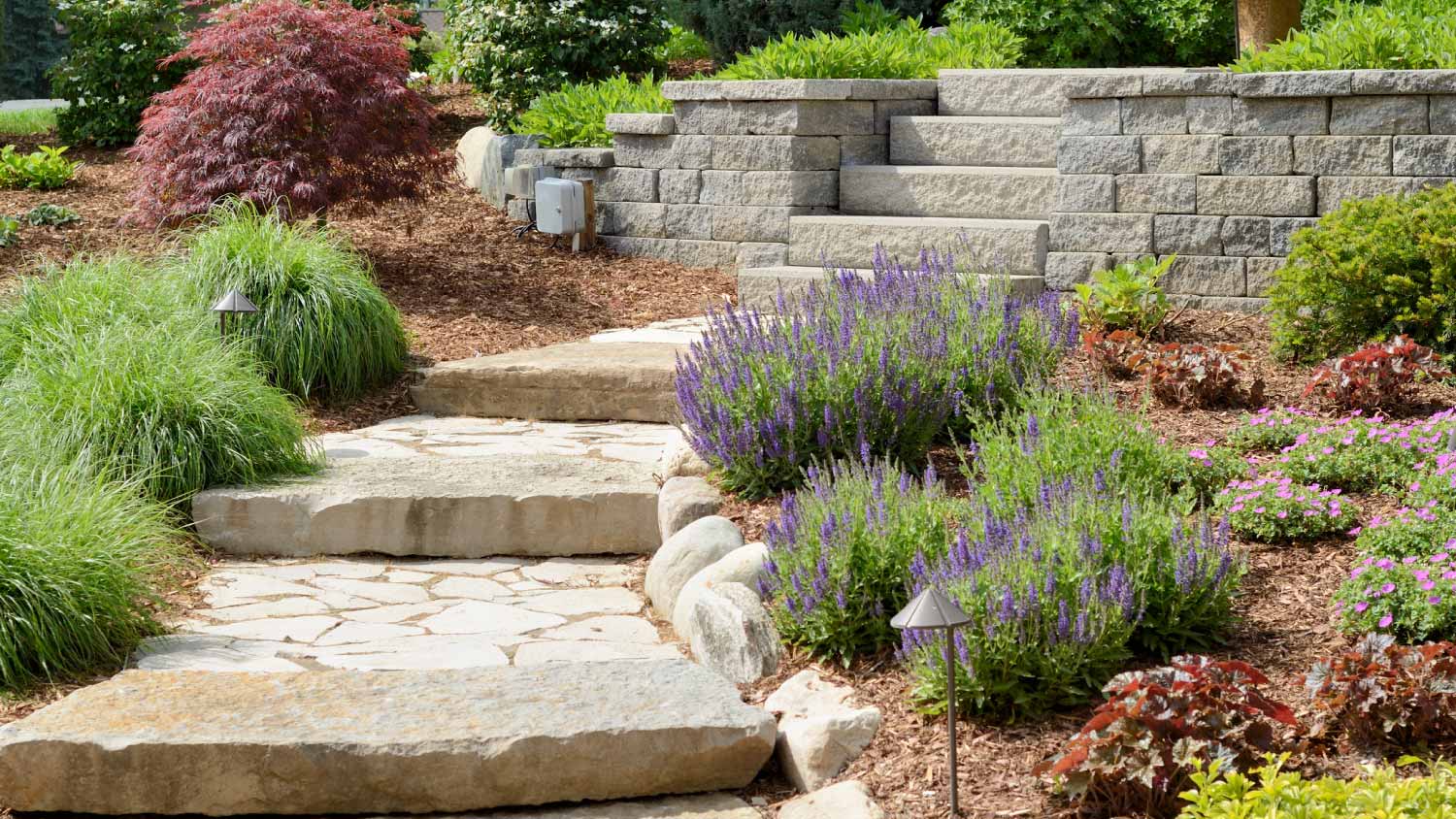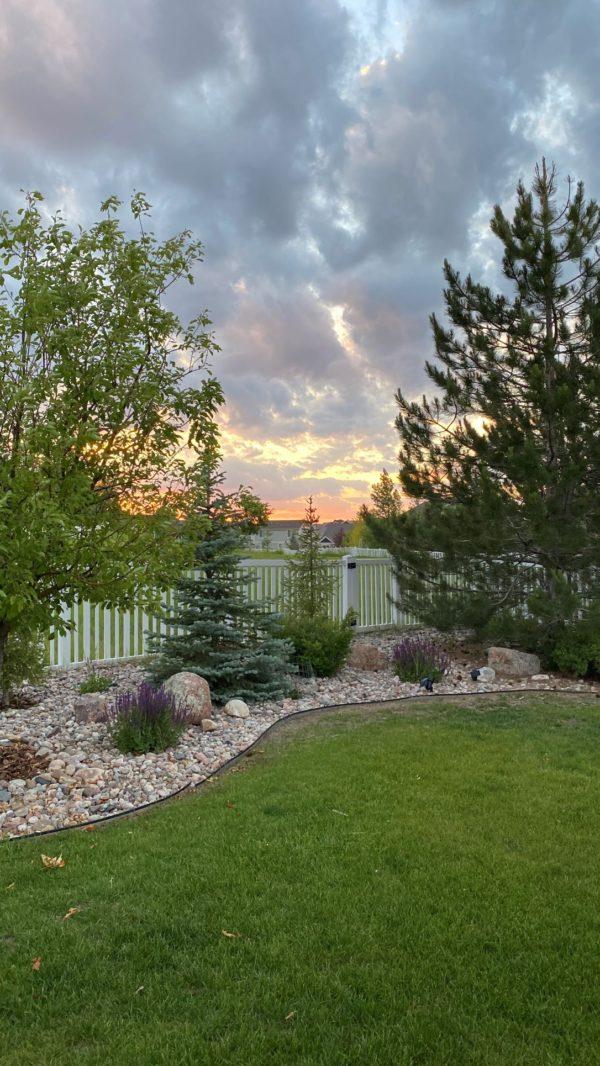Discovering Different Kinds of Landscaping to Enhance Your Outdoor Setting
Landscape design plays an essential role in defining exterior rooms. Different styles, from conventional yards to modern-day minimalist designs, provide distinctive advantages for improving aesthetic appeals and feature. Integrating aspects like xeriscaping and native plants can add to eco-friendly equilibrium. Comprehending the interaction of hardscape and softscape is vital for creating inviting environments. The selections offered can be overwhelming, motivating one to assess which design best lines up with their vision for an outdoor shelter.
Conventional Yard Landscape Design
:max_bytes(150000):strip_icc()/GettyImages-494526921-def1d9162bc84fab8120e8558e779df1.jpg)
While lots of contemporary gardens welcome minimalism and indigenous plantings, traditional yard landscaping continues to be a valued technique that emphasizes proportion, framework, and decorative attributes. This design usually integrates formal geometric layouts, where pathways, flowerbeds, and bushes are prepared with precision. Central focal factors, such as fountains or sculptures, attract the eye and supply a feeling of harmony.Traditional landscape design regularly consists of a selection of plant kinds, showcasing seasonal blossoms and evergreen components. Traditional hedges, perennials, and annuals create vibrant colors and structures throughout the year. In addition, arches, pergolas, and trellises add upright passion and offer as assistance for climbing plants, enhancing the total aesthetic.The usage of natural materials, such as stone and wood, more enriches the standard landscape, adding to an ageless quality. Ultimately, this design invites relaxation and enjoyment, making it a cherished option for those looking for a picturesque exterior setting.
Modern Minimalist Landscape Design
Modern minimal landscape design emphasizes simplicity and capability, identified by open areas and clean lines. Secret characteristics include a limited plant scheme and thoughtful hardscape layout that prioritizes use and aesthetic allure. Reliable plant selection methods better enhance the minimal strategy, creating serene outdoor environments that motivate leisure and consideration.
Key Attributes of Minimalism
An expanding trend in landscaping is the welcome of minimalism, characterized by simplicity and performance. Minimal landscape design concentrates on clean lines, open areas, and a restricted color palette, advertising a sense of tranquility. Aspects are very carefully curated to stay clear of mess, permitting each component to stand apart. Using natural products, such as stone and wood, improves the natural feeling while maintaining an aesthetic equilibrium. Furthermore, minimal layouts frequently include geometric forms, which can develop visual interest without overwhelming the senses. Water features might be included, serving as focal factors that enhance peacefulness. Generally, minimalism in landscaping stresses the charm of restriction, permitting nature's fundamental high qualities to beam through in an unified outside setting.
Plant Choice Approaches
Efficient plant option is vital for attaining the wanted aesthetic in contemporary minimalist landscape design. The focus needs to be on simplicity, utilizing a limited scheme of plants that complement each various other and the surrounding environment. Indigenous plants are usually optimal, as they need much less upkeep and water, advertising sustainability. Picking types with differing appearances and elevations can include aesthetic rate of interest without frustrating the room. Organizing plants in clusters as opposed to scattering them boosts cohesion and reinforces the minimal theme. Evergreen selections can offer year-round structure, while seasonal blooms introduce subtle color modifications. Eventually, the objective is to develop a calm outdoor space that symbolizes peace and consistency via thoughtful plant selections.
Hardscape Design Principles
Vital aspects in hardscape layout substantially add to the general aesthetics and performance of minimalist landscaping. This layout approach emphasizes tidy lines and understated products, creating a clean visual experience. Secret parts include pathways, patios, and keeping walls, which not just define rooms yet also enhance access and functionality. Using materials such as concrete, stone, and timber is widespread, showing a natural yet contemporary aesthetic. Including in proportion layouts and geometric forms better strengthens the minimal viewpoint, enabling a harmonious mix with surrounding plant. In addition, correct drainage and disintegration control are important factors to consider, guaranteeing long life and sustainability. Ultimately, effective hardscape style works as a structure that matches softscape aspects while preserving equilibrium and simpleness in outdoor environments.
Cottage-Style Landscape design
Cottage-style landscaping offers a wonderful strategy to creating inviting exterior rooms. By incorporating charming plant mixes, this design cultivates a feeling of heat and whimsy. The focus on relaxing, distinct locations urges relaxation and satisfaction of nature.
Charming Plant Mixes
Many house owners seek to produce an attractive outdoor space, achieving the appeal of cottage-style landscape design often hinges on thoughtful plant mixes. Lively blossoms, lush foliage, and fragrant natural herbs can be skillfully combined to evoke a sense of fancifulness and fond memories. Combining lavender, daisies, and foxgloves produces a vivid tapestry that attracts pollinators while giving a wonderful scent. Including decorative yards like miscanthus can add appearance and activity, matching the softer blossoms. Additionally, blending seasonal and annual plants assurances continual shade throughout the periods. The usage of mountain climbers, such as clematis or honeysuckle, can boost vertical rate of interest. On the whole, these combinations not just enhance the landscape however likewise promote a enchanting and welcoming ambience.

Comfortable Outdoor Rooms
Producing cozy outside rooms requires a mindful mix of convenience and appeal, matching the vivid plant combinations located in cottage-style landscape design - Outdoor Lighting Installer. These areas often include inviting seating arrangements, such as weather-beaten wood benches or supported chairs surrounded by rich plant. Soft lights, like fairy lights or lights, includes warmth, transforming the space into a serene hideaway. Incorporating components such as trellises adorned with climbing roses or fragrant herbs enhances sensory experiences. In addition, paths made from rustic stones invite exploration and connection with nature. Ornamental touches like birdbaths or wayward garden art add to a feeling of whimsy. Eventually, the objective is to produce a charming ambience that encourages leisure and pleasure of the charm bordering these comfy outdoor places
Xeriscaping for Water Preservation
Exactly how can neighborhoods balance aesthetic landscape design with the pressing demand for water preservation? Xeriscaping becomes a practical option, promoting sustainable methods that lessen water usage while enhancing exterior elegance. This landscape design approach concentrates on using drought-resistant plants belonging to the region, which need significantly much less water than typical gardens. By including mulch and effective watering systems, xeriscaping decreases dissipation and drainage, additional saving priceless water resources.Communities can produce visually enticing landscapes with mindful preparation, choosing a varied range of textures and shades that thrive in arid problems. Additionally, xeriscaping motivates using ornamental rocks and ornamental crushed rock, providing appealing and useful alternatives to turf lawns. As communities welcome this environment-friendly method, they not only decrease their water intake yet additionally promote biodiversity and durability in their neighborhood communities. Inevitably, xeriscaping functions as a demonstration of the harmony between aesthetic look at these guys appeal and ecological responsibility.
Hardscape Layout Aspects
Hardscape layout components play an essential role in improving exterior areas by giving structure and capability. These non-plant features, such as patios, walls, decks, and pathways, produce aesthetic rate of interest while serving functional functions. Utilizing products like block, rock, and concrete, hardscaping adds to the general visual allure and longevity of a landscape.Incorporating hardscape elements can specify areas within a lawn, directing movement and urging social communication. A well-placed pathway can connect various sections of the yard, while keeping walls can handle elevation modifications and prevent erosion.Furthermore, hardscape design can boost availability and security, offering steady surface areas for relaxing or walking. Reliable combination of hardscape components enhances soft landscaping, guaranteeing a balanced outdoor setting. Ultimately, thoughtful hardscape layout boosts not only the elegance of outdoor areas but also their use, making them much more inviting and functional for site visitors and property owners alike.
Outdoor Living Areas
While outside living rooms supply a seamless mix of comfort and nature, they offer as important extensions of a home, enhancing way of living and leisure. These areas can include patios, decks, or exterior cooking areas, developed to foster relaxation and entertainment. Retaining Wall Installation. By including functional furnishings and stylish decor, property owners produce welcoming atmospheres for gatherings or silent evenings.The assimilation of shade frameworks, such as awnings or pergolas, protects against the elements while preserving an open feel. Fire pits and outside heating systems prolong functionality into cooler months, offering warmth and ambiance. Furthermore, including lights functions boosts the area's usability after sundown, developing a magical evening atmosphere.Landscaping components, such as paths and borders, better define these areas, assisting movement and including visual appeal. Eventually, outdoor living areas change yards into flexible hideaways, advertising a lifestyle that embraces both nature and comfort
Native Plant Landscape Design
Native plant landscaping stresses the usage of native flora to produce harmonious and lasting outside environments. This method not only enhances biodiversity yet likewise preserves water and minimizes the demand for chemical plant foods and pesticides. By picking plants that are belonging to a details region, house owners can guarantee that their landscapes are well-adapted to neighborhood soil and climate conditions, resulting in lower upkeep requirements.Additionally, indigenous plants supply important environments for local wild animals, including bees, butterflies, and birds, promoting ecological health and wellness. Landscape makes that integrate these plants typically feature naturalistic designs that mimic regional ecosystems, fostering a local color and connection to the environment.Furthermore, native plant landscape design can add to soil stability and erosion control, making it an environmentally responsible selection. Generally, this method not only beautifies exterior spaces yet also supports the regional ecological community, creating a lasting balance between human task and nature.

Frequently Asked Concerns
Just How Can I Select the Right Landscaping Style for My Home?
Choosing the appropriate landscape design design for a home involves examining the residential or commercial property's architecture, climate, and individual choices. Landscape Lighting Installer. Looking into various styles and getting in touch with specialists can give other advice to create a harmonious exterior room tailored to private needs
What Is the Ordinary Price of Specialist Landscaping Providers?
The average price of professional landscaping services commonly ranges from $1,000 to $5,000, depending upon job place, size, and intricacy. Property owners ought to take into consideration acquiring multiple quotes to ensure they obtain reasonable prices and top quality service.
Exactly how Usually Should I Preserve My Designed Lawn?
The frequency of preserving a landscaped yard commonly depends upon the attributes and plants present. Typically, routine maintenance every few weeks is advised, with seasonal jobs boosting in frequency during optimal growing periods for optimal health and looks.
Are There Landscaping Options for Tiny Urban Spaces?

Various landscape design alternatives exist for little metropolitan spaces, consisting of upright gardens, container plants, and rooftop yards. Incorporating these elements can take full advantage of limited areas while offering greenery, improving aesthetic appeals, and improving air high quality in metropolitan visite site environments.
What Plant kingdom Are Finest for Drawing In Local Wildlife?
The most effective plants for bring in local wild animals include native flowering types, berry-producing bushes, and varied turfs. These plants provide necessary food and environment, cultivating a thriving ecological community that sustains different birds, bugs, and little creatures. Lots of property owners seek to produce a picturesque outdoor room, accomplishing the beauty of cottage-style landscape design typically hinges on thoughtful plant mixes. Creating cozy outdoor spaces requires a mindful mix of convenience and beauty, matching the lively plant combinations located in cottage-style landscaping. Native plant landscape design stresses the use of native flora to produce lasting and unified outdoor atmospheres. Landscape designs that include these plants often include naturalistic formats that imitate neighborhood communities, cultivating a sense of area and link to the environment.Furthermore, native plant landscape design can add to soil stability and erosion control, making it an eco accountable choice. Various landscape design options exist for little urban rooms, including vertical gardens, container plants, and roof yards.